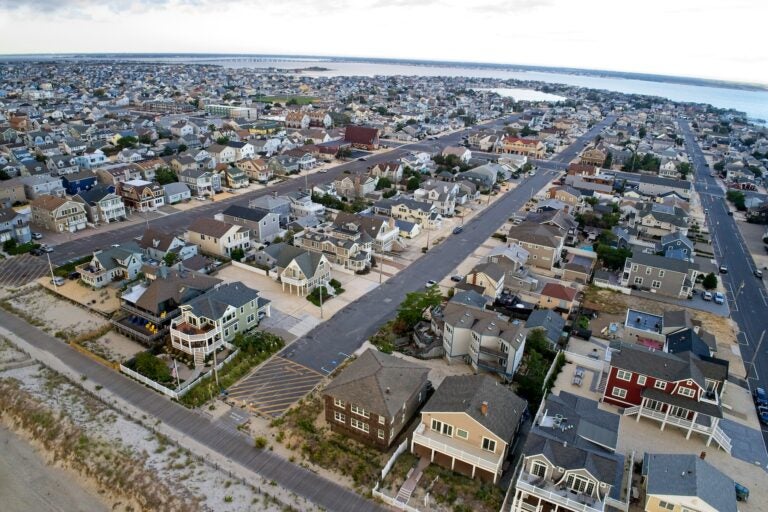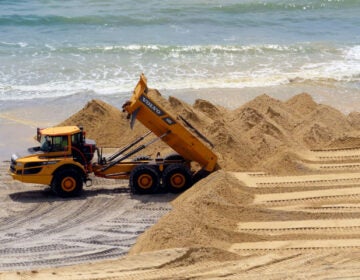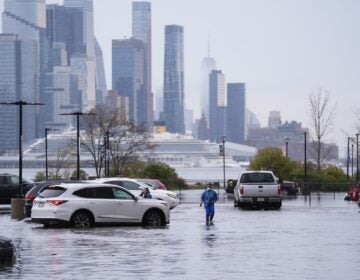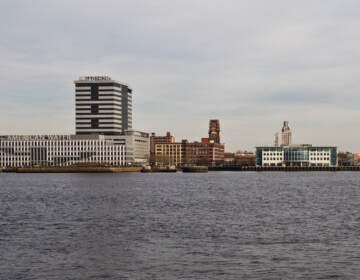New Jersey modifies proposed building elevation rules along the shore by 1 foot due to new science
The state’s latest proposal would require new buildings in coastal flood zones be elevated an additional 4 feet, rather than 5 feet.
Listen 1:20
New construction in the Jersey Shore floodplain must exceed FEMA standards. (iStock/Johnrob)
This story is part of the WHYY News Climate Desk, bringing you news and solutions for our changing region.
From the Poconos to the Jersey Shore to the mouth of the Delaware Bay, what do you want to know about climate change? What would you like us to cover? Get in touch.
Buildings constructed along the Jersey Shore will likely need to comply with more stringent flood elevation standards — but not as restrictive as the state originally proposed.
The New Jersey Department of Environmental Protection announced Monday it will ease its proposed Resilient Environments and Landscapes rules, which were expected to dramatically increase elevation requirements along the coast and expand the area in which these requirements apply, in order to protect new construction from the impacts of climate change.
Last year, officials proposed raising the elevation requirements for new and significantly renovated buildings within the state’s coastal flood zone by 5 feet above existing elevation rules. The additional 5 feet reflects the upper bound of the range scientists said sea levels were likely to rise in the state by the year 2100 compared to 2000. The state’s new proposal would lessen that additional elevation by 1 foot, requiring buildings to be raised an additional 4 feet.
“We’re hearing from our coastal communities that they are comfortable with a higher level of risk, and we need to consider that,” Department of Environmental Protection Commissioner Shawn LaTourette told reporters during a press briefing Monday.
Officials say rollback results from changing science and public input
The modified proposal, which will go through its own public comment period, is a response to both feedback from coastal communities and changing science, DEP officials told reporters Monday.
Some local government officials and business representatives characterized the original proposal as extreme, saying it would make building at the shore more expensive.
DEP officials say the change is also the result of evolving science. The state’s original proposal was based on a 2019 projection that sea levels off the coast of New Jersey would likely rise no more than 5.1 feet by the end of the century under a moderate emissions scenario. Since then, newer projections have come out that show the earth warming more slowly in the future, as a result of commitments by countries to reduce greenhouse gas emissions, LaTourrette said. The state is now citing projections that show New Jersey’s sea levels likely rising no more than 4.4 feet by 2100.
“Let’s change with the science, with the projections, and not pretend that it’s static,” LaTourette said.
The newer numbers are “reasonable,” said Robert Kopp, a climate scientist at Rutgers University who worked on the initial sea level rise projections.
“Over the last 15 years, there has both been substantial advances in climate policy around the world, and there’s also been a lot of technological innovations,” Kopp said. “We’re in a better place.”
DEP said it would revisit sea level rise projections every five years under the new proposal, and update elevation requirements if appropriate.
Smaller elevation increase and less expansion of flood zones
The state of New Jersey currently requires new buildings in the floodplain to be built 1 foot above FEMA’s standards, which already require elevations as high as 12 feet in places along New Jersey’s coast but are often outdated and do not account for rising flood risk in the future due to climate change. Under the state’s new proposal, new and significantly renovated buildings within the coastal floodplain would need to be elevated an additional 4 feet.
For example, a home built in a floodplain where the base flood elevation is currently 9 feet would need to be elevated a total of 14 feet above a past sea level measurement. Under the state’s original proposal, the home would have been elevated 15 feet.
The state’s proposed rules would also expand the area in which coastal elevation standards apply, from the current 16% of the state’s land area to around 17% under the latest version, officials said. That’s a smaller increase than the original proposal, which would have expanded the regulatory flood zone to 17.5% of the state’s land area.
The modified proposal announced Monday also clarifies that affordable housing projects can be eligible for “hardship exemptions” from some of the requirements, as long as public safety is not undermined, and allows applications submitted to DEP up to 180 days after the rule goes into effect to be reviewed under the existing regulations.
Under the revision, the new rules would kick in for construction proposals 180 days after the effective date — likely next summer, if the rules are finalized by the end of this year, as DEP plans.
How to weigh in on the proposed rules
The state plans to publish a “Notice of Substantial Change” for the rule in the New Jersey Register next Monday, which will kick off a 60-day public comment period.
Members of the public can also provide written and oral comments during a hearing planned for September. Officials hope to finalize the rule by the end of this year, before Gov. Phil Murphy’s term ends in January 2026.

Get daily updates from WHYY News!
WHYY is your source for fact-based, in-depth journalism and information. As a nonprofit organization, we rely on financial support from readers like you. Please give today.





